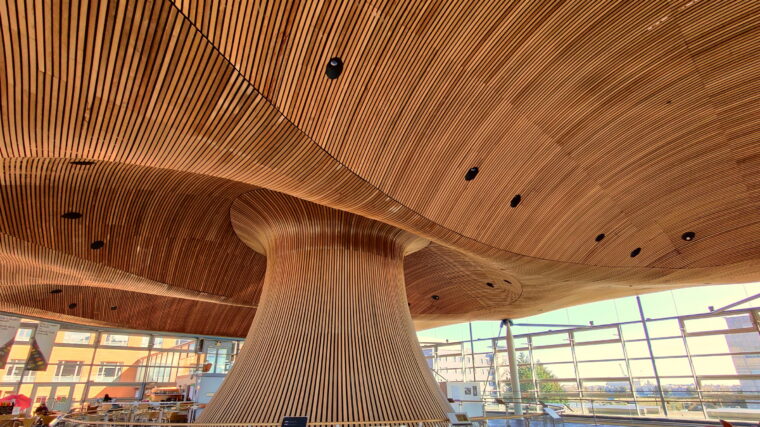In UK higher education, compassion is often treated as an optional extra, something to be considered once the metrics are met, the audits are done, and the strategies are signed off. This framing misses the point.
Compassion is not a soft skill or a luxury. It is not something we add in once the “real work” is done. It is a strategic ethic and a way of designing systems, relationships, and institutions that enable people to thrive. It is about recognising suffering and taking meaningful action to alleviate it. It is about creating conditions in which students, colleagues, and leaders can do their best work, sustainably.
In higher education, compassion is often misunderstood, mistaken for sentimentality or seen as incompatible with the rigour and excellence that universities are expected to uphold. This is a false dichotomy. Compassion is not the opposite of academic excellence; it is what makes it possible.
When compassion is embedded into the culture and infrastructure of a university, it doesn’t lower standards, it sustains them. It doesn’t avoid challenges; it enables people to meet challenges without burning out. And it doesn’t replace accountability, it reframes it, through a lens of relational responsibility and shared purpose.
The recent Universities UK report, Transformation and efficiency: towards a new era of collaboration, arrives at a moment of reckoning. The pressures facing the sector, whether financial, regulatory, or reputational, are not new, yet they have intensified. The report offers a clear and necessary diagnosis and outlines seven opportunities for transformation, including developing collaborative structures, sharing services and infrastructure, shared procurement, digital transformation, benchmarking efficiency and strengthening leadership and governance.
These are important and they are also technical – but technical change, while necessary, is not sufficient. What’s missing is the cultural infrastructure that helps these changes take hold and endure. Without it, transformation risks becoming transactional and something done to people, rather than with them. This is where compassion becomes essential and as the connective tissue that binds strategy to sustainability as opposed to being an add-on. Compassion enables us to ask different questions: “What can we change?” AND “How will this change be experienced?” or “How do we become more efficient?” AND “How do we remain human while doing so?”
Addressing burnout
At this time of year, the signs are everywhere: exhaustion, disillusionment, a creeping sense that the work is never done, and the values that brought us into the sector are being eroded by the systems we now work within.
Burnout is not a personal failing; it is a systemic signal. As Maslach and Leiter remind us in The truth about burnout, burnout arises when people face too much work, too little control, and a misalignment of values. These are organisational design problems as opposed to individual resilience problems. If we want transformation, we must prioritise the conditions in which people are expected to transform. Compassion, understood as a framework for action, offers a way to do this. It invites us to design systems that are effective, humane and investing in people’s capacity to give, as opposed to just demanding more.
Humility is also something required of us at this moment, acknowledging that we are all stepping into the unknown; planned change in a complex system is, at best, hopeful fiction. We cannot predict exactly what will emerge and we can choose how we show up in the process.
Compassion gives us permission to not have all the answers and it allows us to hold space for uncertainty, and to move forward anyway, together. Transformation is a collective endeavour and one that will only succeed if we create conditions in which people feel safe enough, supported enough, and connected enough to participate.
Transformation needs cultural infrastructure
Transformation is a human and technical exercise. It emerges or recedes in the spaces between people: how they experience change, how they relate to one another, and how they make sense of their work. Without attention to culture, even the most well-designed reforms risk faltering.
Compassion offers a way to build the cultural infrastructure that transformation requires, inviting different, deeper questions, such as how change will affect relationships, how institutions can recognise and respond to emotional experience, what inclusive design looks like in different contexts, and where the spaces are that enable people to reflect, connect, and recover. These questions are central to whether transformation efforts succeed or stall; culture is the medium through which change happens.
The Covid-19 pandemic gave us a glimpse of what compassionate institutions can look like. Faced with crisis, many universities responded with agility and care; extending deadlines, adapting policies, and prioritising inclusion. These were acts of strategy, not charity. They enabled continuity, protected equity, and demonstrated the sector’s capacity for humane innovation.
They also revealed that compassion, when practised in systems not designed to support it, can come at a cost that is less often acknowledged. The compassion extended to others was not always matched by compassion for self. Many colleagues gave more than they had to give, and when the crisis faded, the systems around them reverted to old norms including rigid timelines, performance metrics and competitive cultures. The emotional weight of compassion is not inevitable; it becomes heavy when systems are misaligned, when care is expected and not enabled. In the right conditions, compassion is a way of working that restores us as opposed to a burden.
This reveals a deeper truth: our systems were never designed to sustain compassion. If we want to embed it beyond moments of crisis, we must treat it as a core institutional value and to recognise that compassion includes ourselves.
Compassion in practice
Here are five shifts that can embed compassion into the fabric of transformation.
1. Reframe wellbeing as strategic infrastructure
Wellbeing is not a side project. It is foundational to performance, retention, and innovation. Institutions could move from monitoring wellbeing to designing it through embedding it in curricula, policies, workload models, and leadership practices.Boundaries can be enacted, encouraged, and celebrated.
2. Recognise and resource emotional experience
The work of care, whether in teaching, research, service, or leadership, is often invisible and undervalued. It can become labour and lead to empathic distress, when systems make it unsustainable. When time, space, and support are present, compassion is a source of meaning and connection. We can name it, measure it, and reward it, factoring it into workload models, promotion criteria, and professional development.
3. Design for relational accountability
Compassionate systems are relational systems. Transformation must ask: how will this affect relationships? What power dynamics are at play? Whether it’s a new assessment policy or a shared service model, the relational impact matters.
4. Create space for reflection and connection
Efficiency is not about doing more with less, it’s about doing the right things well. Institutions must create time and space for colleagues and students to reflect, connect, and recover. This is infrastructure, not an indulgence.
5. Build on what already works
Compassion is not new. Across the sector, there are already informal networks, communities of practice, and relational leadership approaches enacted that embody compassionate principles. The task is to amplify, connect, and learn from them.
The Universities UK report rightly identifies collaboration as a route to transformation. Collaboration is a relational practice as well as a structural arrangement that requires trust, shared purpose, and the ability to navigate differences. These capabilities grow through connection and trust and cannot be mandated; they are human ones, developed through compassion and sustained by culture.
Compassion can also help us rethink our perception of resistance. Too often, “resistance to change” is dismissed as inertia or protectionism when it is often a signal of fear, of loss, of values under threat. Compassionate leadership invites active listening to this signal and responsiveness with transparency, inclusion, and care.
Compassion is a whole-university approach as opposed to be the responsibility of student services or human resources and notably visible in:
- Teaching: through learning environments that prioritise dialogue, inclusion, and mutual respect.
- Support services: by moving from transactional help to meaningful connection.
- Leadership: by sharing power, modelling visibility, and practising relational accountability.
- Policy: by asking, always, how decisions will affect relationships and wellbeing.
The UUK report offers a timely and necessary roadmap for sector-wide transformation. To realise these ambitions, we will need to prioritise our focus on culture and connection alongside systems and structures; compassion is a strategic imperative.
This is an invitation to those leading transformation, to see compassion as a driver of efficiency; to policymakers, to recognise that sustainable change requires care as well as compliance; and to all of us in the sector, to choose compassion for ourselves and others as a way of being and not just as a crisis response.
The future of higher education depends on what we do and critically how we do it and, on the cultures, we choose to develop. If we create the conditions for compassion to thrive in higher education, it will no longer feel like a burden, it will become a source of meaning, connection, and renewal. This is how transformation becomes possible and sustainable.
All views expressed in this blog are entirely those of the authors and do not represent the views or positions of any affiliated organisations or institutions.














Thank you so much for this article! I hope it is read widely by VCs committed to their various ‘transformation’ projects.
Great post, a reflection and call to action the sector really needs to heed. Interesting to me that the four bullet points for a whole university approach don’t include research. It is so central and so often places value on a culture of individualism and over-load I wonder what your thoughts are on it? Often when I speak with universities on research culture change it is around utilising external pressures to drive a change only a few understand the need for. This is not a very sustainable basis for real change.